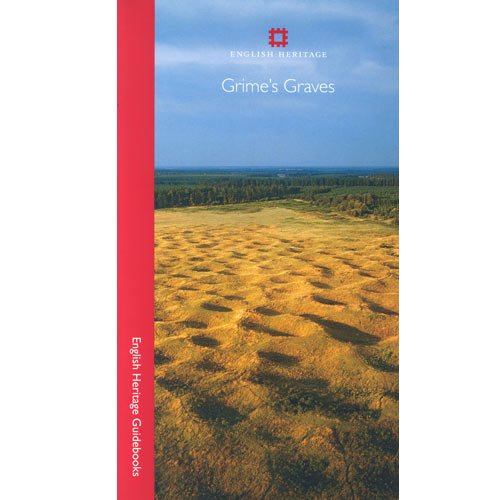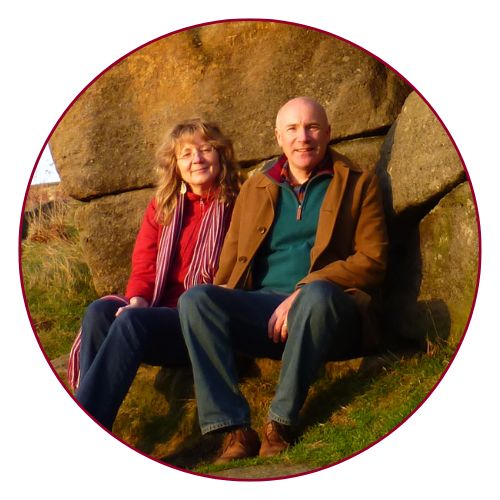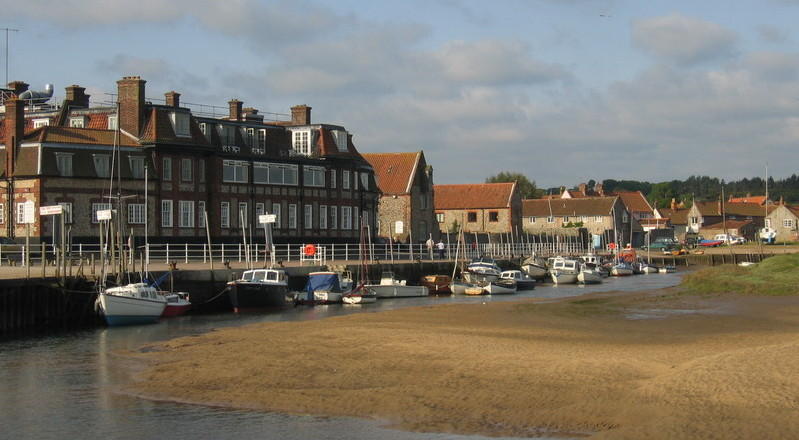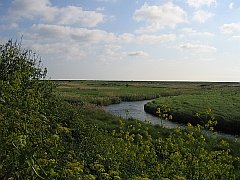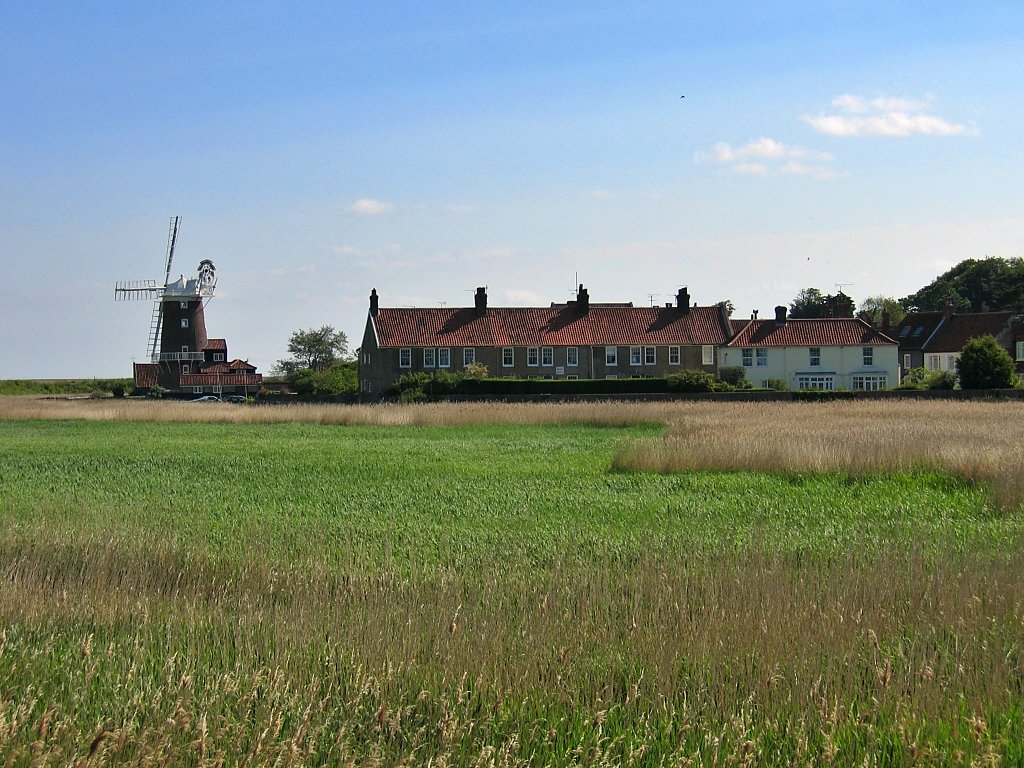Days Out In Norfolk
Grime's Graves
We love our days out in Norfolk and picked a warm and sunny April day for our trip to Grime’s Graves. The weather itself was a surprise as it was also Easter bank holiday and as we all know, English bank holidays are usually wet and cold!
As we were
travelling all the way from our Northamptonshire home, we tried to fit the most
into our day and the trip included Grime’s Graves, a pub lunch at The Ram in
Brandon, Weeting Castle, and an ice cream and walk to the beach in
Wells-next-the-Sea. Lunch was lovely, but... while Sue was ordering
food from the bar, a gentleman offered her £20,000
for our car, a lift to the station, and our train fare home. We're still wondering why. ;-)
Back to Grime’s Graves. Going by the name alone, you might expect something horribly gruesome. Or, at the very least, an ancient burial site. It's neither. Grime’s Graves is the name given by the Anglo-Saxons to a Neolithic flint mining area in the Thetford Forest. They believed that the unusual, lunar-like landscape of abandoned mines had been created by the Saxon god Grim (or Woden). Since they might also have found iron age burials in some of the mining pits, they put the two together and got... Grime’s Graves. They also named the mound on the eastern side of the site Grimshoe meaning Grim’s burial ground, and they used this mound as a court to resolve local disputes.
Days Out In Norfolk - Exploring Grime's Graves
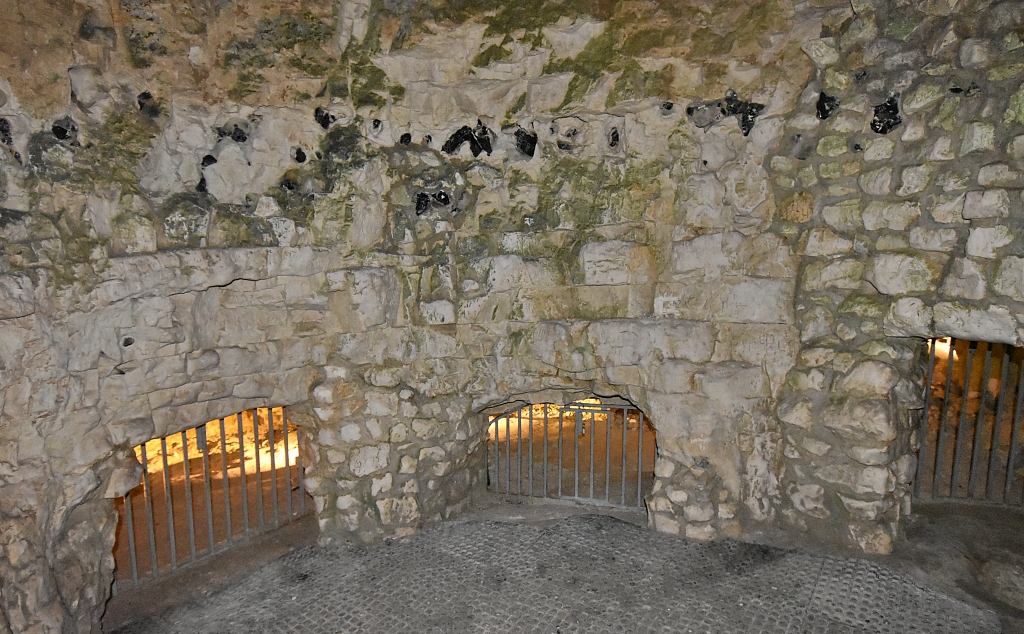 Inside Pit 1 at Grime's Graves © essentially-england.com
Inside Pit 1 at Grime's Graves © essentially-england.comThe Grimes Graves site covers about 20 acres and is a patchwork of lumps and hollows, the remains of the 433 mines, pits, and spoil heaps in the area. Some mines are just vertical shafts. Others have chambers with galleries of up to 15 metres long. The depth of the shafts is between 3 and 15 metres depending on where the shaft is on the site.
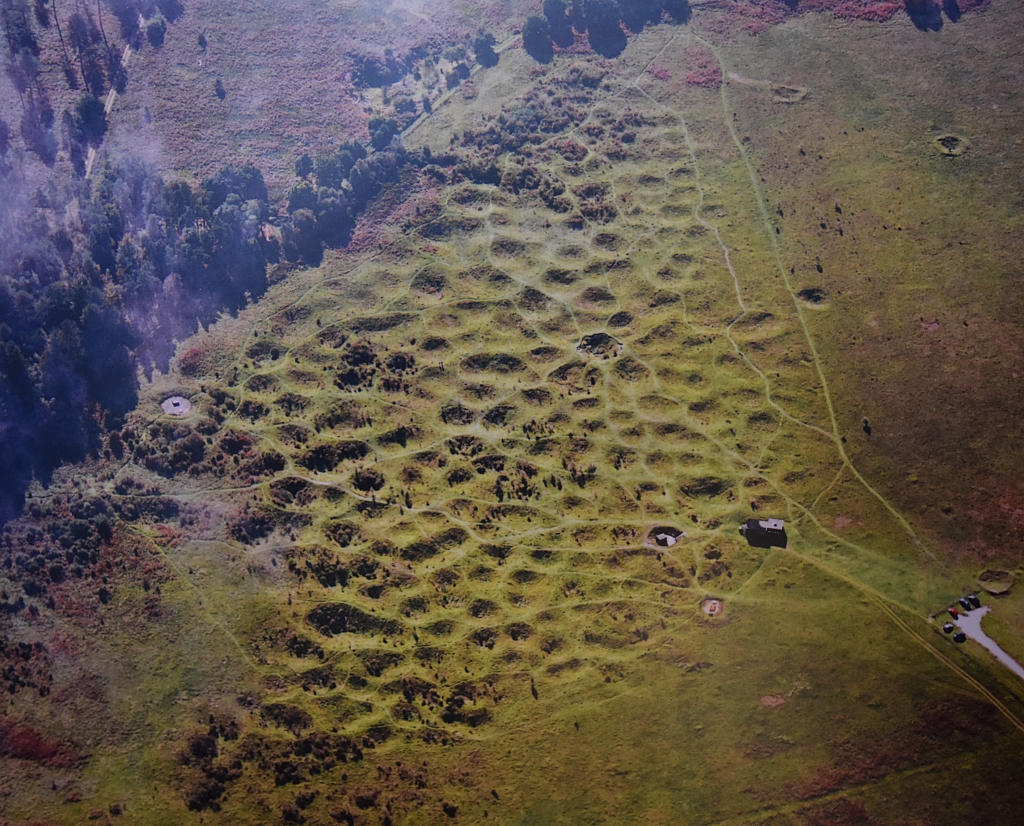 Aerial View of Grime's Graves Site (Photo taken from English Heritage information board) © essentially-england.com
Aerial View of Grime's Graves Site (Photo taken from English Heritage information board) © essentially-england.comThere are around ten flint mines in England, and pit 1 at Grime’s Grave is the only flint mine open to the public. To enter the mine, you must don a hard hat and descend 9 metres using a set of near vertical steps. From inside the small pit, you can look down some of the galleries and see the black flint that has not been removed. It’s amazing to think that the mine was being used around 4500 years ago!
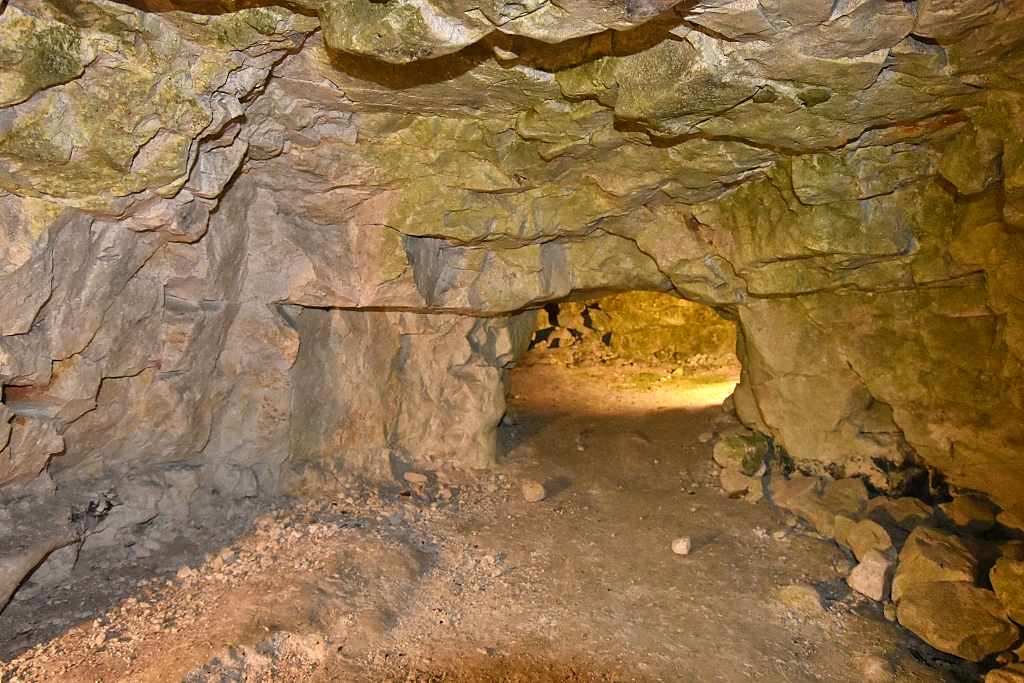 Gallery in Pit 1 at Grime's Graves © essentially-england.com
Gallery in Pit 1 at Grime's Graves © essentially-england.comI struggle to think how hard the Neolithic people must have worked to dig these mines, having memories of the struggles I’ve had using modern tools when landscaping our gardens. To dig a shaft a metre or more wide and up to 15 metres deep with nothing but flint tools and deer antlers seems almost impossible. When they got below ground there wouldn’t have been much light. Obviously, they were very resourceful people as around the same time about two hundred miles away in Wiltshire they were building Stonehenge and Avebury!
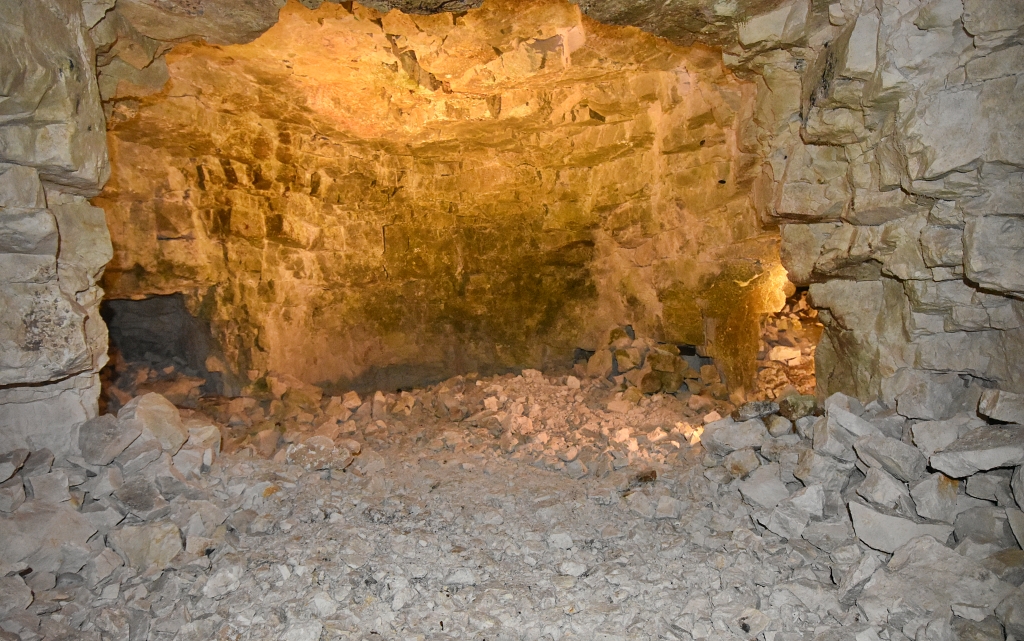 Days Out in Norfolk - Discover a 4500 Year Old Flint Mine at Grime's Graves © essentially-england.com
Days Out in Norfolk - Discover a 4500 Year Old Flint Mine at Grime's Graves © essentially-england.comAll this hard work must have been profitable though as the high-quality jet-black flint was a valuable commodity that was traded over great distances, and used mainly for tools, weapons, and ceremonial objects.
Flint is biogenic silicon that forms nodules in layers of chalk. Colouring, strength, and durability of flint varies enormously between deposits and - as the Neolithic peoples clearly knew - flint found at depths is often of higher quality than surface depoists. That's because the right combination of pressure, temperature, and acidity, dehydrates and compacts the flint into the strong, black flint found in Grimes Graves. The ancients were expert flint workers, who knew that the black flint would be easier to knap and shope into larger objects like axe heads.
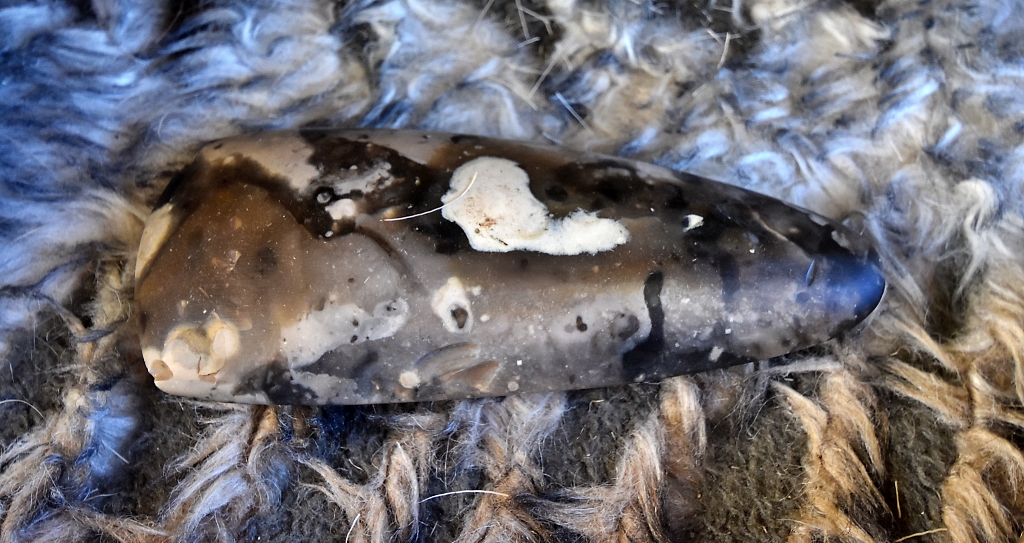 Flint Tool on Display at Grime's Graves © essentially-england.com
Flint Tool on Display at Grime's Graves © essentially-england.com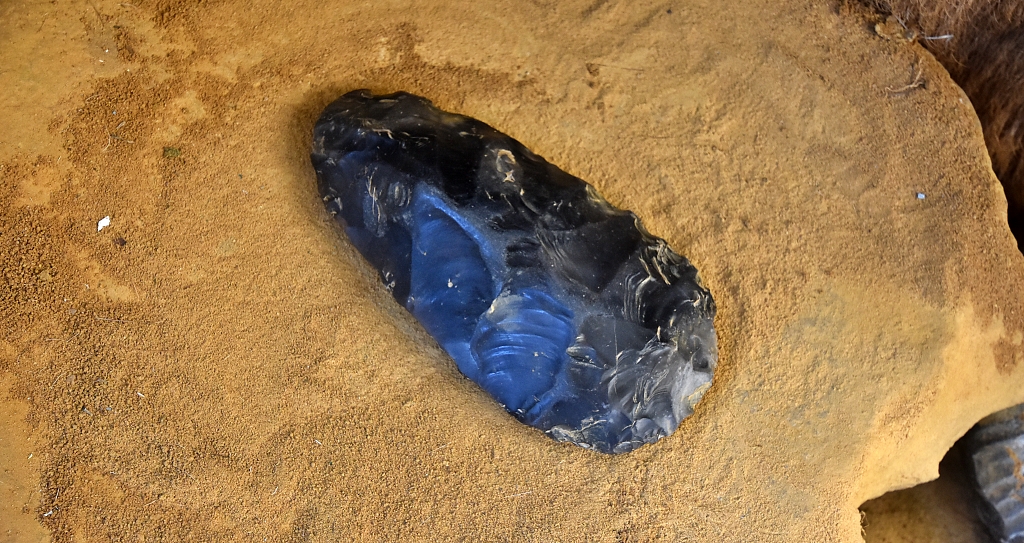 Flint Tool from Grime's Graves © essentially-england.com
Flint Tool from Grime's Graves © essentially-england.comYou can take a short walking tour around the site that introduces the history and setting of the landscape. It visits some of the larger mines that have been excavated, but are not open to the public, Grimshoe Mound, iron age burial sites, bronze age waste dumps (called middens), and the home guard foxholes which were dug during the Second World War for soldiers to watch for the threat of airborne invasion. While exploring the site you will probably notice all the rabbits and their warrens. Around the twelfth century the local lords started to establish rabbit warrens in this area of Norfolk as the acid soil was not good enough to grow crops. If you have time, there is an early fifteenth century Warren Lodge a few miles away in the Thetford Forest. A warrener would have lived here to protect the valuable rabbits.
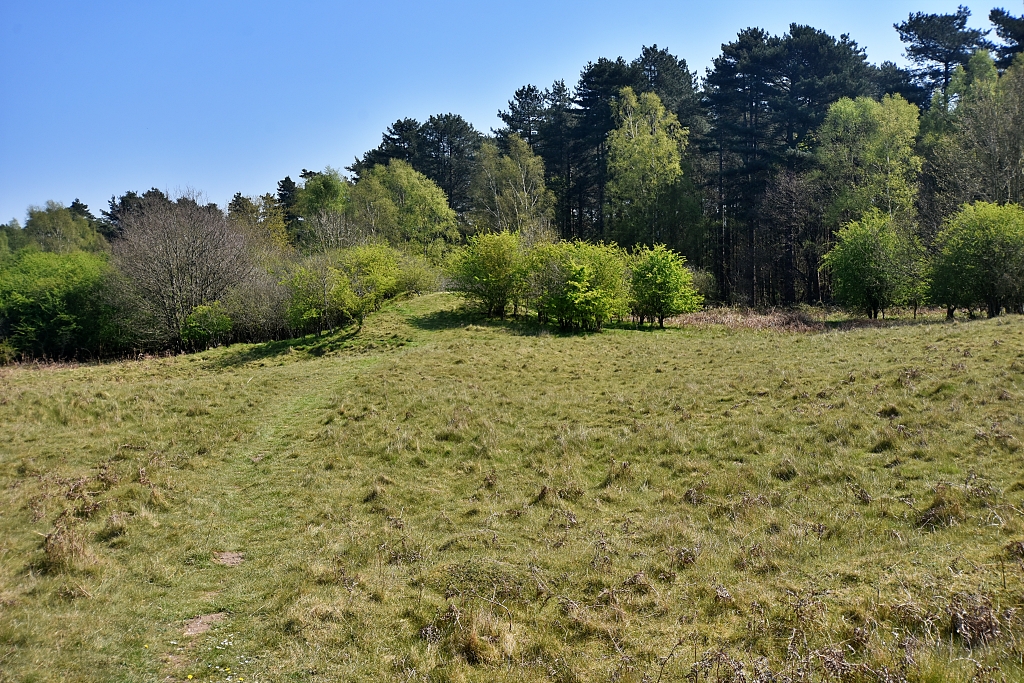 Grimshoe Mound at Grime's Graves © essentially-england.com
Grimshoe Mound at Grime's Graves © essentially-england.com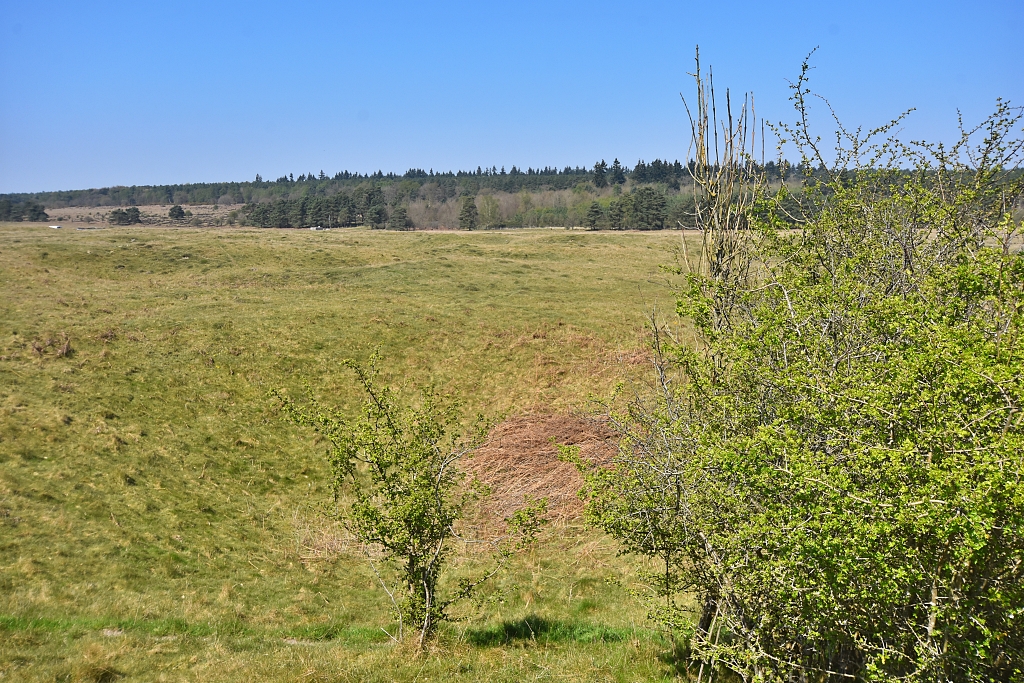 View From Grimshoe Mound © essentially-england.com
View From Grimshoe Mound © essentially-england.comIf you would like more information about Grime’s Graves and its opening times, then please visit the English Heritage website.
There is also a very useful guidebook explaining the history and landscape.
Are You Planning a Holiday in Norfolk?
Where You Could Stay
Norfolk has no shortage of fabulous holiday accommodation whether you want to spend time on the beach, love boating or want to explore inland. You may covet a tiny fisherman's cottage like the one in Blakeney we kept returning to. You may like something larger and more modern like a loft overlooking the Norfolk Broads, or the right place for you may be a chic city apartment perfectly placed to explore Norwich...
To see other holiday cottages in Norfolk click here. Or check out holiday cottages in other parts of England by clicking here.
Or you could try a family orientated holiday resort in Lincolnshire as there's plenty of choice...
If you need to find a hotel, then try one of these search platforms...
What You Could See and Do
It's next to impossible to be bored in Norfolk, there's just so much to do and see. The list below includes some of our favourite places
- Explore Norwich with its shops and two cathedrals and pay a visit to Norwich Castle and its teapot museum.
- Visit Admiral Lord Nelson's birthplace at Burham Thorpe and read the report of the Battle of Trafalgar in a copy of The Times from 1805
- Spend a day at Sandringham and Castle Rising Castle
- Take a ride on the Holt to Sheringham Railway and explore the beautiful little town of Holt and the seaside town of Sheringham
- Explore the ruins of Castle Acre and Castle Acre Priory
- Shop in Burnham Market
- Wander around the small town of Blakeney, explore the church and harbour before making an attempt to reach the seals at Blakeney Point
- Admire the famous windmill and go birdwatching in Cley-next-the-Sea
- Be wowed by the rhododendrons in Sheringham Park
- Visit Anne Boleyn's family home, Blickling Hall, or explore Oxburgh Hall, a fabulous manor house with a moat.
- Go wildlife spotting while walking through the Cley marshes from Blakeney or to the small village of Morston and its quay.
- Or even fish for crabs and wander along the famous pier at Cromer.
For more inspiration try our Things to do in Norfolk page.
For more days out in Norfolk ideas return from Grime's Graves to the Norfolk page.
